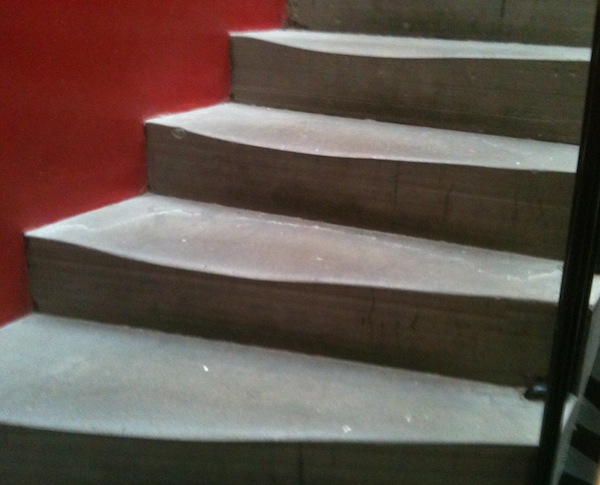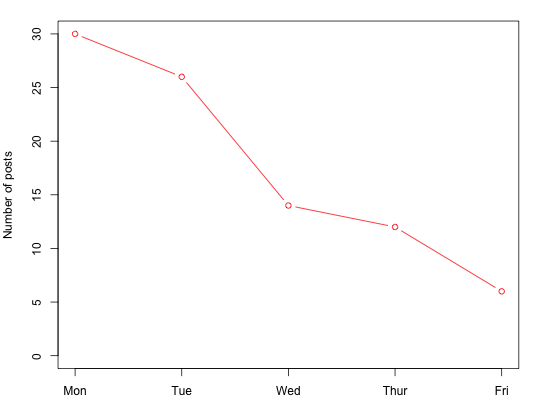![]() For some reason I wasn’t exactly keeping up with my e-mail last week – or much else that wasn’t Big Geology Conference related. So, although I did take note of the e-mail containing the glad tidings that my post ‘Ten Million Feet Upon the Stair’ had been chosen to be part of next year’s Open Lab anthology, once I had made a pleased noise or two (and a celebratory tweet), I didn’t have the time to dwell on it too much, as I had to get back to getting my brain overloaded by cool new geoscience.
For some reason I wasn’t exactly keeping up with my e-mail last week – or much else that wasn’t Big Geology Conference related. So, although I did take note of the e-mail containing the glad tidings that my post ‘Ten Million Feet Upon the Stair’ had been chosen to be part of next year’s Open Lab anthology, once I had made a pleased noise or two (and a celebratory tweet), I didn’t have the time to dwell on it too much, as I had to get back to getting my brain overloaded by cool new geoscience.
But now I have the time to think about it (and get around to approving the edits for the book version before this year’s editor Jennifer Oullette breaks out her painful-sounding ‘Mallet of Loving Correction’*), I have to say that I’m rather pleased about this. Not just pleased in general, though of course I am; who wouldn’t be a bit chuffed that something they wrote is going to appear in a proper book? No, I’m pleased that it’s this particular post, of everything that I’ve written this year, that got the nod. Why? Because I put a lot of effort into writing it.
I’m actually not the most naturally fluent of writers: I can’t just sit down and let perfect prose flow easily from my head onto the screen or paper. Instead, my writing tends to coalesce from a starting collection of disjointed sentence fragments that represent the key ideas I want to express, or nice turns of phrase that express them. I arrange these into a semi-logical order, and then there is a messy sequence of filling in the gaps so it all flows together, swapping things around, and rewriting, sometimes several times.
For me, the most challenging writing is when I have an idea or concept that feels perfectly clear in my head, but is novel or unfamiliar enough that I struggle to actually articulate it. This happens all the time when I’m writing scientific papers: I can take ages endlessly writing and rewriting the same few paragraphs as I try to make my ideas and interpretations as clear and robust as I possibly can. It can be very frustrating, but despite the common stereotype, clear writing is just as important to doing good science as well-designed experiments, good data and clever ideas. After all, your revolutionary theories will get nowhere if you’re the only one who understands them.
Sometimes, I hit a similar block when trying to write a blog post, and ‘Ten Million Feet Upon the Stair’ is a prime example. The basic concept – that a centuries’ worth of wear on a stone staircase is a striking visual representation of the large cumalative impact of many small actions, a key concept in geology – came to be not long after I first moved into my flat in Edinburgh. I liked the idea, and thought it would be good piece. But turning that passing thought into something more substantial turned out to be much more challenging, which is why a post about the staircase up to my flat in Edinburgh did not actually go up on the blog until two months after I’d moved to Chicago. By that point, it had already existed in some form for quite a few months, but I’d periodically work on it for half an hour or so, get frustrated with my inability to write something good, and put it away again for a few weeks. This continued until my annoyance with not finishing the darned thing finally inspired me enough to thrash out something I was happy with. That is why this post getting the nod from the Open Lab judges pleases me so much: I put quite a lot of effort into clearly articulating an idea, and writers who I respect got it. And they liked it! Validation!
On a less self-involved note, it wasn’t just due to the struggle to get it written that this post very nearly didn’t get written at all. To really make sense, the post needed a photo of the stairs in question. Given that I walked up and down them every day, and most of those times I was carrying a phone with a camera, you’d think that that wouldn’t have been a problem. But believe it or not, this shot:
was taken on my last morning in Edinburgh, about ten minutes before I got a taxi to the train station. You’d think that when you’re about to move countries, taking photos for future blog posts would not exactly be at the top of one’s to-do list, but it turns out that you recall all sorts of things when you’re in an empty flat with nothing to do but wait. I’m certainly glad now that I remembered.
So that’s the story of my Open Lab entry, which is in some pretty illustrious company. I was extremely glad to see that the judges loved Dana Hunter’s wonderful account of how she got bitten by the geology bug, ‘Adorers of the Good Science of Rock-breaking’ (also a lovely testimonial to the power of public outreach through blogging), as much as I did. Further geoblogospheric representation comes via Dave Bressan’s fascinating piece on forensic geology. Not that these two posts, and mine, represent even a small fraction of the truly excellent geoblogging that took place in 2011, but hopefully we’ll do you all proud in the finished anthology.
*sic. And scary.






Nice plan for content warnings on Mastodon and the Fediverse. Now you need a Mastodon/Fediverse button on this blog.